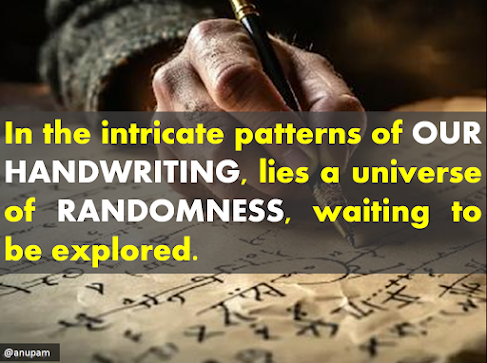The Intriguing Idea
In the realm of cryptography, randomness is a fundamental building block. From generating secure keys to encrypting sensitive data, random numbers are essential. While traditional methods like quantum random number generators (QRNGs) and true random number generators (TRNGs) have been widely used, a novel approach is emerging: leveraging the inherent randomness of human handwriting.
How it Works
The idea is simple: human handwriting is inherently variable, even for the same individual. By analyzing the unique characteristics of a person's handwriting, such as pen pressure, stroke speed, and angle, it's possible to extract random numbers.
Here's a breakdown of the process:
- Capture Handwriting Data
- Specialized hardware or software can be used to capture detailed data about the writing process, including pen pressure, stroke speed, and angle.
- Extract Randomness
- Advanced algorithms can analyze the captured data and extract features that exhibit randomness.
- Generate Random Numbers
- The extracted features can be used to generate a sequence of random numbers.
Challenges and Considerations
While the concept is promising, several challenges need to be addressed:
- Consistency and Bias: Human handwriting can exhibit patterns and biases, which could compromise the randomness of the generated numbers.
- Data Quality: The quality of the captured handwriting data is crucial. Noise, interference, and inconsistencies can affect the accuracy of the extracted randomness.
- Security Risks: Advanced AI models can potentially imitate human handwriting, raising concerns about the security of handwriting-based randomness.
- Practicality and Scalability: Implementing handwriting-based randomness in real-world applications can be complex and resource-intensive.
The Future of Handwriting-Based Randomness
While the potential of using handwriting as a source of randomness for cryptography is intriguing, it's important to approach this idea with caution. While it's a novel concept, established cryptographic techniques based on mathematically proven random number generation methods remain the most secure and reliable options since an AI model can mimic handwriting.
Further research and development are needed to address the challenges and unlock the full potential of handwriting-based randomness. As technology advances, we may see innovative applications of this concept, particularly in niche use cases where high levels of security and personalization are required.
 https://orcid.org/0000-0002-9097-2246
https://orcid.org/0000-0002-9097-2246









0 comments:
Post a Comment